
Filter News
Area of Research
- Advanced Manufacturing (2)
- Biological Systems (1)
- Biology and Environment (100)
- Computational Biology (2)
- Computational Engineering (3)
- Computer Science (7)
- Electricity and Smart Grid (1)
- Energy Science (49)
- Functional Materials for Energy (1)
- Fusion and Fission (6)
- Isotope Development and Production (1)
- Isotopes (10)
- Materials (49)
- Materials for Computing (8)
- Mathematics (1)
- National Security (26)
- Neutron Science (31)
- Nuclear Science and Technology (11)
- Quantum information Science (2)
- Sensors and Controls (1)
- Supercomputing (73)
News Topics
- (-) Artificial Intelligence (131)
- (-) Big Data (79)
- (-) Biology (128)
- (-) Biomedical (73)
- (-) Clean Water (33)
- (-) Microscopy (56)
- (-) Molten Salt (10)
- (-) Security (31)
- (-) Space Exploration (26)
- 3-D Printing/Advanced Manufacturing (146)
- Advanced Reactors (40)
- Bioenergy (112)
- Biotechnology (39)
- Buildings (74)
- Chemical Sciences (86)
- Composites (35)
- Computer Science (226)
- Coronavirus (48)
- Critical Materials (29)
- Cybersecurity (35)
- Education (5)
- Element Discovery (1)
- Emergency (4)
- Energy Storage (114)
- Environment (218)
- Exascale Computing (67)
- Fossil Energy (8)
- Frontier (64)
- Fusion (66)
- Grid (74)
- High-Performance Computing (130)
- Hydropower (12)
- Irradiation (3)
- Isotopes (62)
- ITER (9)
- Machine Learning (68)
- Materials (157)
- Materials Science (158)
- Mathematics (12)
- Mercury (12)
- Microelectronics (4)
- Nanotechnology (64)
- National Security (86)
- Neutron Science (171)
- Nuclear Energy (122)
- Partnerships (68)
- Physics (69)
- Polymers (35)
- Quantum Computing (53)
- Quantum Science (92)
- Simulation (65)
- Software (1)
- Statistics (4)
- Summit (71)
- Transportation (103)
Media Contacts

A former intern for ORNL was selected to represent Tennessee presenting his research at the National Junior Science and Humanities Symposium. Langalibalele “Langa” Lunga, a senior at Farragut High School in Knoxville, Tennessee, interned with ORNL working on deep learning for fast scanning microscopy, a technique for capturing microscopic images more rapidly than traditional methods.
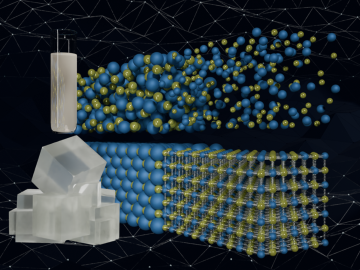
Scientists have developed a new machine learning approach that accurately predicted critical and difficult-to-compute properties of molten salts, materials with diverse nuclear energy applications.

From decoding plant genomes to modeling microbial behavior, computational biologist Priya Ranjan builds computational tools that turn extensive biological datasets into real-world insights. These tools transform the way scientists ask and answer complex biological questions that advance biotechnology breakthroughs and support cultivation of better crops for energy and food security.

The Center for Bioenergy Innovation, or CBI, at the Department of Energy’s Oak Ridge National Laboratory has promoted Melissa Cregger and Carrie Eckert to serve as chief science officers, advancing the center’s mission of innovations for new domestic biofuels, chemicals and materials.
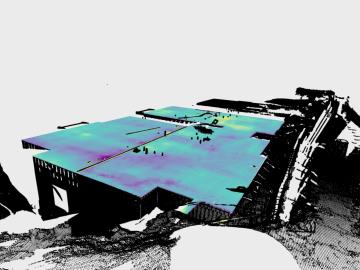
Researchers at ORNL have developed a tool that gives builders a quick way to measure, correct and certify level foundations. FLAT, or the Flat and Level Analysis Tool, examines a 360-degree laser scan of a construction site using ORNL-developed segmentation algorithms and machine learning to locate uneven areas on a concrete slab.
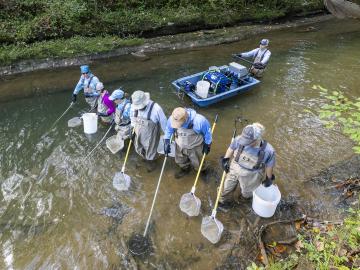
ORNL’s Biological Monitoring and Abatement Program, or BMAP, is marking 40 years of helping steward the DOE’s 33,476 acres of land on which some of the nation’s most powerful science and technology missions are carried out.
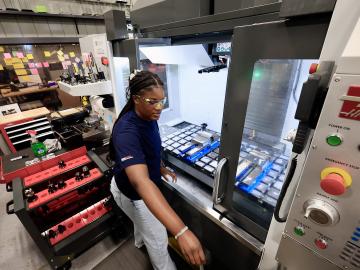
UT-Battelle has contributed up to $475,000 for the purchase and installation of advanced manufacturing equipment to support a program at Tennessee’s Oak Ridge High School that gives students direct experience with the AI- and robotics-assisted workplace of the future.

The Heartbeat Detector, developed at ORNL and licensed by Geovox Security Inc., detects hidden individuals in vehicles by measuring suspension vibrations. Now using a compact black box and cloud software, the system is more affordable and easier to use, while remaining the industry standard worldwide.
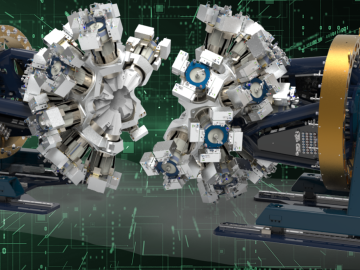
Analyzing massive datasets from nuclear physics experiments can take hours or days to process, but researchers are working to radically reduce that time to mere seconds using special software being developed at the Department of Energy’s Lawrence Berkeley and Oak Ridge national laboratories.



